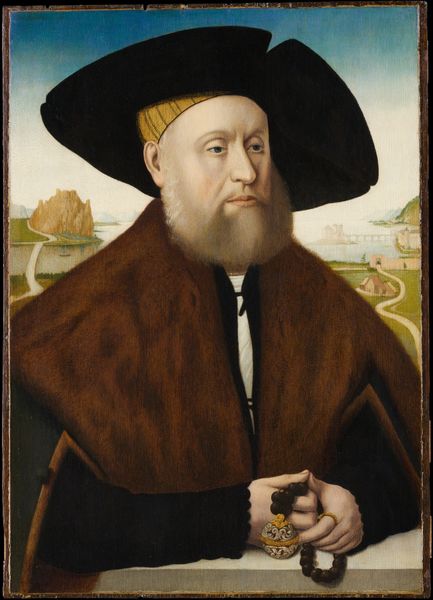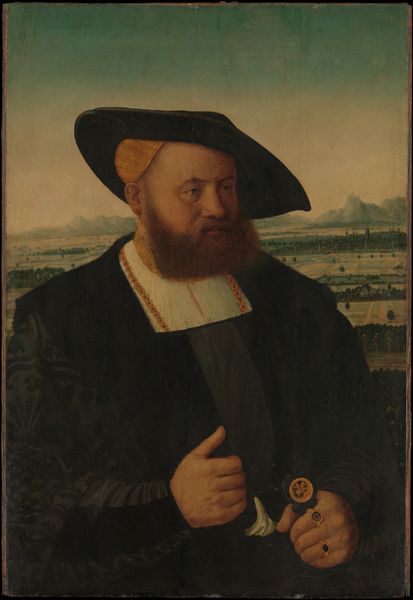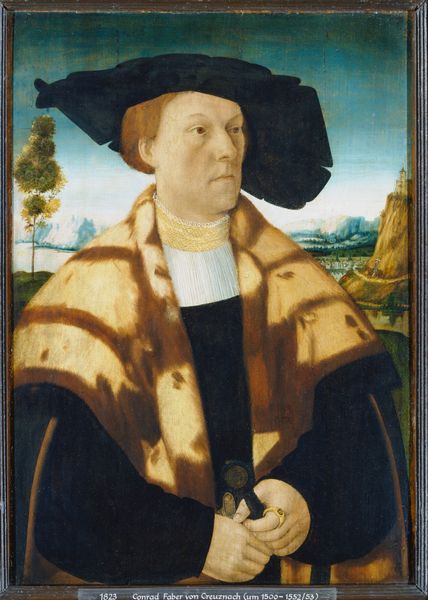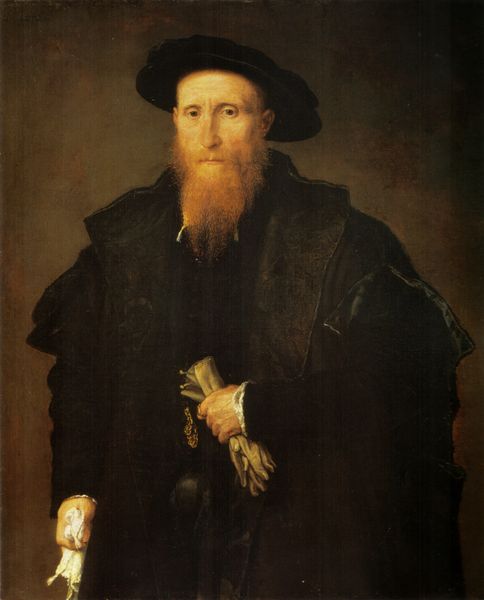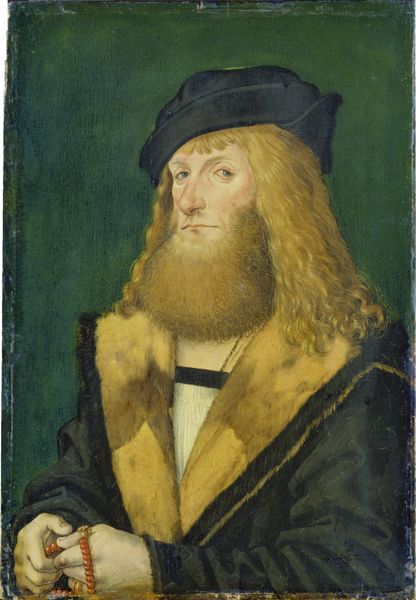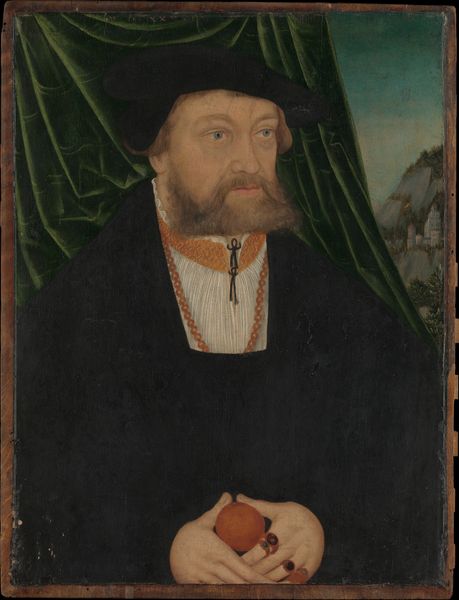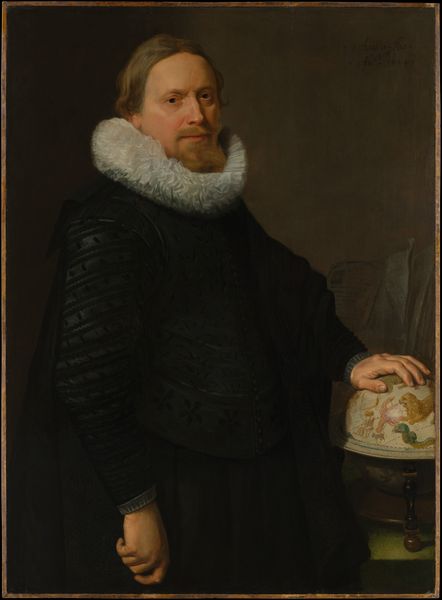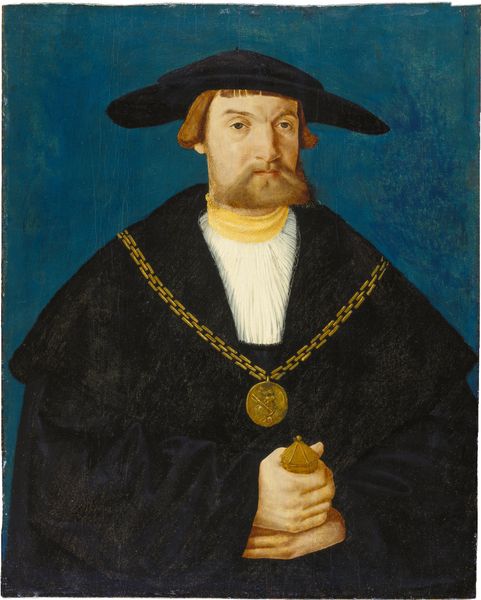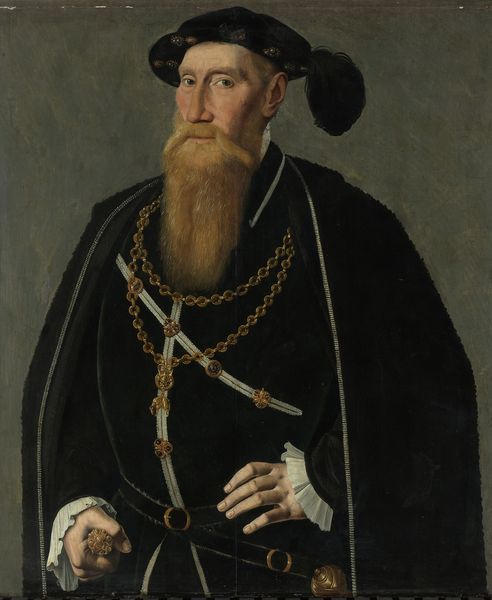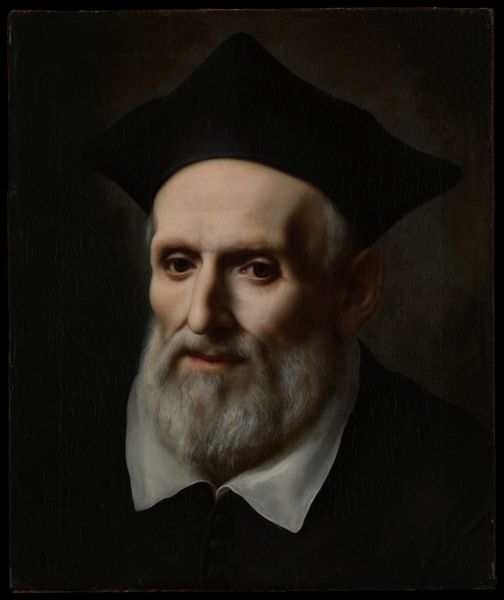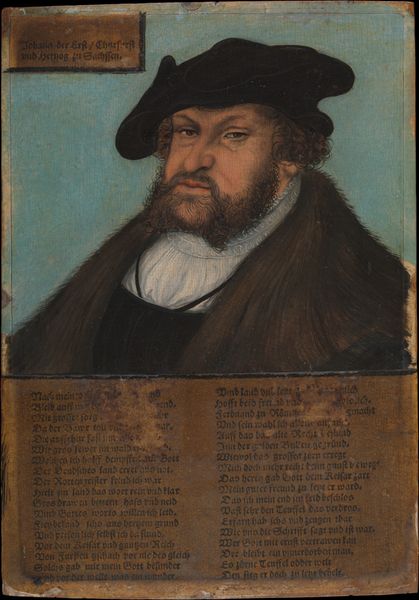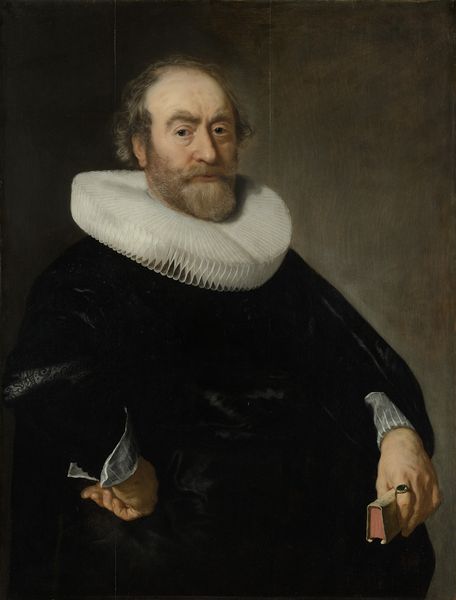
Portrait of Heinrich (_) vom Rhein zum Mohren c. 1580 - 1600
0:00
0:00
oil
#
portrait
#
character portrait
#
low key portrait
#
oil
#
portrait subject
#
11_renaissance
#
portrait reference
#
portrait head and shoulder
#
13_16th-century
#
portrait drawing
#
portrait art
#
portrait character photography
#
fine art portrait
#
celebrity portrait
Dimensions: 55.8 x 39.6 x min. 0.1 cm
Copyright: Public Domain
Curator: Ah, what an arresting portrait. It’s identified as a "Portrait of Heinrich (_) vom Rhein zum Mohren" by Conrad Faber von Kreuznach, likely created sometime between 1580 and 1600. It’s rendered in oil. Editor: Yeah, striking. My immediate sense is...melancholy power. That downcast gaze and the muted palette really give that impression. A certain stillness, like he's carrying the weight of something profound. Curator: Absolutely. The identity of Heinrich vom Rhein remains a bit obscure, but we can consider his portrayal within the context of Renaissance portraiture and its construction of identity. Note the background landscape: the strategic deployment of such a panorama as testament to the sitter's status. The rosary held is also clearly indicative of this man's values and self-identification. Editor: He almost feels staged, doesn't he? Like he's presenting himself to the world with a carefully chosen blend of gravitas and piety. Is that just me, or are his features slightly exaggerated? It gives him almost a… comical feel against that serene background. But yeah, that ring and rosary – those are calculated signifiers, for sure. Curator: I'd say it’s important not to divorce these aesthetic considerations from the historical circumstances which shape both the painter's vision and subject's need to project their own desired vision of self, which is inextricable from the era's social and political norms. This interplay reveals the complexities of identity and representation in the late Renaissance. Editor: Good point, yes, it goes well beyond face value and into a broader societal-historic contextualisation. The dark attire against his fair skin makes him jump out, though. As I was saying at the beginning, the overall subdued tones almost seem like he is a figure hidden in the shadows, as he presents the accoutrements of prestige and status. Curator: That interplay of shadow and light does emphasize a level of, let’s say, "discreet" opulence that characterized powerful figures from this era. We see how their self-representation cannot simply be an exhibitionistic show of wealth, but instead rooted in this more careful deployment of iconographic signification, like an opulent book opened only to the most capable reader. Editor: Indeed, every bead and every landscape carefully considered. What do you make of this artwork overall, in light of this iconographic density? Curator: Considering its cultural significance and historical framing, its portrayal provides insight into Renaissance ideas surrounding identity, spirituality, and the very constructed nature of individual presentation within social hierarchies. Editor: Well, to me, beyond those historical contexts, this painting resonates through time simply as an interesting portrait. A glimpse into someone else’s constructed idea of themselves and an amazing rendition to consider that tension between outer performance and an unknowable, mysterious inner world.
Comments
No comments
Be the first to comment and join the conversation on the ultimate creative platform.
